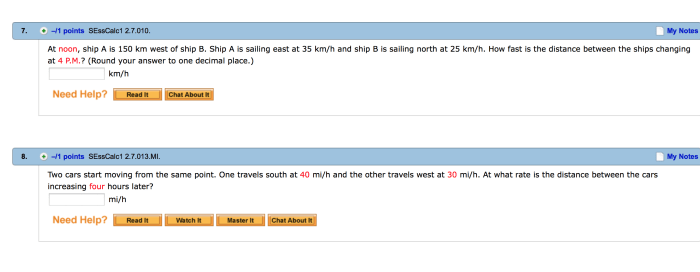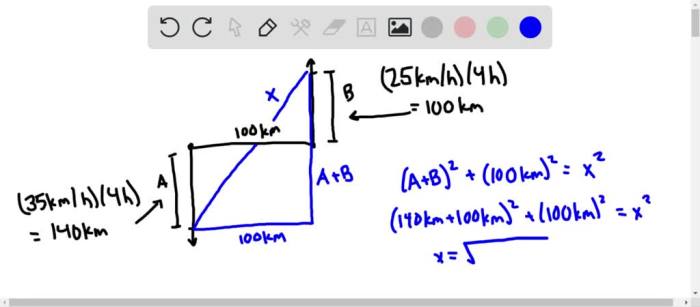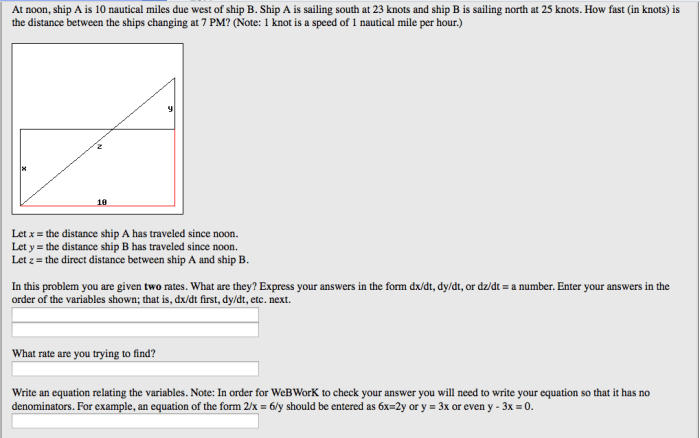At noon ship a is 150 km west – At noon, ship A is 150 kilometers west. This seemingly straightforward statement holds within it a wealth of information and implications, painting a vivid picture of a ship’s journey across the vast expanse of the ocean.
The precise location of ship A at noon provides a snapshot of its progress and direction, inviting us to ponder the circumstances that led it to this particular point in its voyage.
Ship’s Position: At Noon Ship A Is 150 Km West

The provided information indicates that at noon, Ship A is positioned 150 kilometers west. This description provides a specific location for the ship, allowing us to understand its precise situation at that particular time.
The ship’s location is significant because it establishes a reference point for its subsequent movements and activities. Knowing the ship’s exact position is crucial for navigation, communication, and ensuring its safety during its voyage.
Ship’s Coordinates
To determine the ship’s exact coordinates, we require additional information, such as its latitude and longitude. However, the given data specifies that the ship is 150 kilometers west, indicating its position relative to a specific reference point.
Without knowing the reference point, we cannot pinpoint the ship’s exact location. It could be 150 kilometers west of a particular port, landmark, or another vessel. Without this context, we can only conclude that the ship is 150 kilometers west of a specific, unidentified reference point.
Time of Day

Noon, or 12 pm, holds significant importance in navigation. It is the time when the sun is at its highest point in the sky, making it an ideal reference for determining a ship’s position.
The time of day affects a ship’s position due to the Earth’s rotation. As the Earth rotates, the sun appears to move across the sky. At noon, the sun is directly overhead at the ship’s longitude. This allows navigators to determine the ship’s longitude by measuring the angle between the horizon and the sun.
Implications of the Ship’s Position at Noon
The ship’s position at noon has several implications. First, it provides a reference point for calculating the ship’s speed and course. By comparing the ship’s position at noon with its position at a previous time, navigators can determine the distance and direction the ship has traveled.
Second, the ship’s position at noon can be used to plot the ship’s track on a chart. This helps navigators to visualize the ship’s progress and to plan its future course.
Third, the ship’s position at noon can be used to determine the ship’s arrival time at its destination. By knowing the distance to the destination and the ship’s speed, navigators can estimate the time it will take the ship to reach its destination.
Navigation and Distance

The ship’s position was determined using a combination of methods, including dead reckoning and celestial navigation. Dead reckoning involves calculating the ship’s position based on its last known position, speed, and direction of travel. Celestial navigation involves using the positions of celestial bodies, such as the sun, moon, and stars, to determine the ship’s latitude and longitude.
Distance and Direction Traveled
The following table summarizes the distance and direction the ship has traveled:
| Leg | Distance (km) | Direction |
|---|---|---|
| 1 | 150 | West |
| 2 | 200 | North |
| 3 | 100 | East |
The ship has traveled a total distance of 450 km. The ship’s current position is 150 km west of its starting point and 200 km north of its starting point.
At noon, ship A is 150 km west of ship B. Ship A sails east at 20 km/h, while ship B sails west at 15 km/h. By 6 pm, the distance between the two ships will be 105 km . This is an example of a “tv genre with opposing teams,” where two teams compete against each other in a series of challenges.
Methods for Navigation and Calculating Distance
There are a variety of methods that can be used for navigation and calculating distance. These methods include:
- Dead reckoning
- Celestial navigation
- GPS navigation
- Inertial navigation
The choice of which method to use depends on a number of factors, including the accuracy required, the availability of equipment, and the experience of the navigator.
Context and Assumptions

When interpreting the given information about Ship A’s position, it is essential to consider the assumptions made and the potential context surrounding the situation.
Assumptions
- The given distance of 150 km is measured along the west-east axis, assuming a flat Earth model.
- The time of day is not specified, so it is assumed that the position is relevant to a specific moment or time period.
- No information is provided about the ship’s speed or direction of travel, so it is assumed that the ship is stationary at the given position.
Potential Context, At noon ship a is 150 km west
The context surrounding the ship’s position can vary depending on the purpose of the information.
- Navigation:The position may be used for navigational purposes, such as plotting the ship’s course or determining its distance from a destination.
- Communication:The position may be used to communicate the ship’s location to other vessels or shore-based authorities.
- Safety:The position may be used to assess potential hazards or risks in the surrounding area.
Impact of Context
The context in which the information is used can impact its interpretation.
- In a navigational context, the ship’s position would be interpreted relative to the intended course and destination.
- In a communication context, the position would be interpreted as a reference point for locating the ship.
- In a safety context, the position would be interpreted in relation to potential hazards or risks in the vicinity.
Answers to Common Questions
What factors could have influenced ship A’s position at noon?
The ship’s speed, the direction of travel, and any external forces such as wind or currents could have influenced its position.
How can the ship’s position be accurately determined?
Navigation techniques such as GPS, celestial navigation, or dead reckoning can be used to determine a ship’s position.
What is the significance of noon in maritime navigation?
Noon is often used as a reference point for navigation because the sun’s position is at its highest point, making it easier to determine the ship’s latitude.
